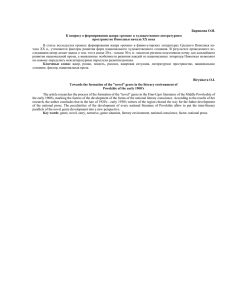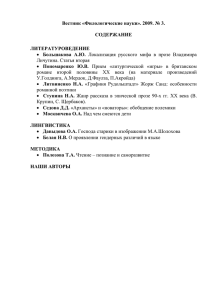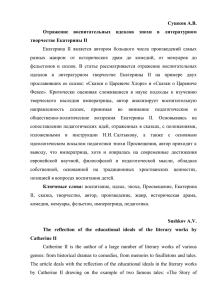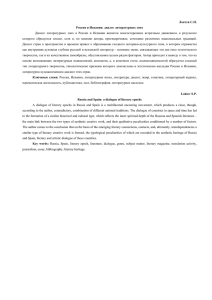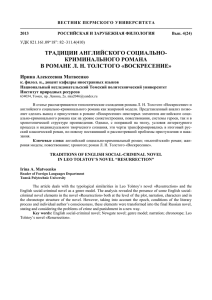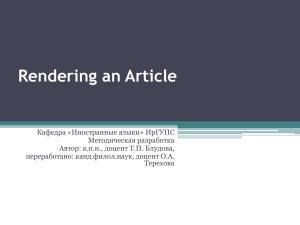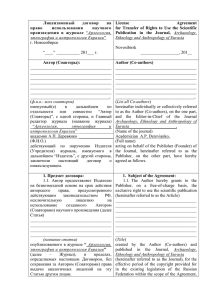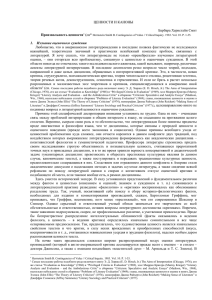Уздеева Т.М. Концепция художественного типа «новых людей
реклама
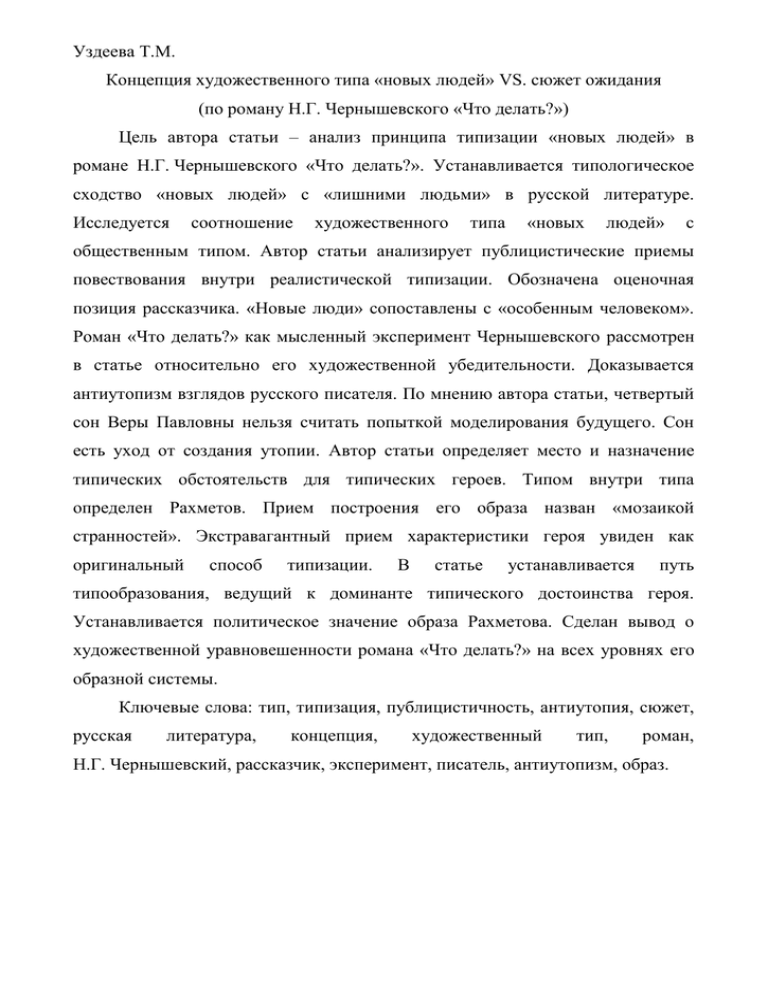
Уздеева Т.М. Концепция художественного типа «новых людей» VS. сюжет ожидания (по роману Н.Г. Чернышевского «Что делать?») Цель автора статьи – анализ принципа типизации «новых людей» в романе Н.Г. Чернышевского «Что делать?». Устанавливается типологическое сходство «новых людей» с «лишними людьми» в русской литературе. Исследуется соотношение художественного типа «новых людей» с общественным типом. Автор статьи анализирует публицистические приемы повествования внутри реалистической типизации. Обозначена оценочная позиция рассказчика. «Новые люди» сопоставлены с «особенным человеком». Роман «Что делать?» как мысленный эксперимент Чернышевского рассмотрен в статье относительно его художественной убедительности. Доказывается антиутопизм взглядов русского писателя. По мнению автора статьи, четвертый сон Веры Павловны нельзя считать попыткой моделирования будущего. Сон есть уход от создания утопии. Автор статьи определяет место и назначение типических обстоятельств для типических героев. Типом внутри типа определен Рахметов. Прием построения его образа назван «мозаикой странностей». Экстравагантный прием характеристики героя увиден как оригинальный способ типизации. В статье устанавливается путь типообразования, ведущий к доминанте типического достоинства героя. Устанавливается политическое значение образа Рахметова. Сделан вывод о художественной уравновешенности романа «Что делать?» на всех уровнях его образной системы. Ключевые слова: тип, типизация, публицистичность, антиутопия, сюжет, русская литература, концепция, художественный тип, роман, Н.Г. Чернышевский, рассказчик, эксперимент, писатель, антиутопизм, образ. Uzdeyeva T.M. The conception of the literary type of «new people» VS. the plot of expectation (based on N.G. Chernyshevsky’s novel «What is to be done?») The author of the article aims at analyzing the principle of typification of «new people» in N.G. Chernyshevsky’s novel « What is to be done?». The typological similarity between «new people» and «needless people» in the Russian literature is established. The correlation between the literary type of «new people» and the public type is considered. The author of the article analyzes the publicistic features of narration in the realistic typification. The evaluative position of the story-teller is designated. «New people» are compared with the «special person». Chernyshevsky’s novel «What is to be done?» as a mental experiment is considered in the article in terms of its literary persuasiveness. The anti-utopianism of the Russian writer’s views is proved. According to the author of the article, the fourth dream of Vera Pavlovna cannot be considered as an attempt to model the future. The dream is a means of fleeing from the creation of utopia. The author of the article defines a place and purpose of typical circumstances for typical heroes. Rakhmetov is determined to be the type within the types. The technique of his image creation is called a «mosaic of strangenesses». An extravagant technique of the hero’s characteristic is understood as an original way of typification. The article establishes the way of type creation leading to a dominant of the hero’s typical dignity. The political value of Rakhmetov’s image is defined. The conclusion on literary steadiness of the novel «What is to be done?» is drawn at all levels of its imagery system. Key words: type, typification, publicistic feature, anti-Utopia, plot, Russian literature, conception, literary type, novel, N.G. Chernyshevsky, story-teller, experiment, writer, anti-utopism, image.
